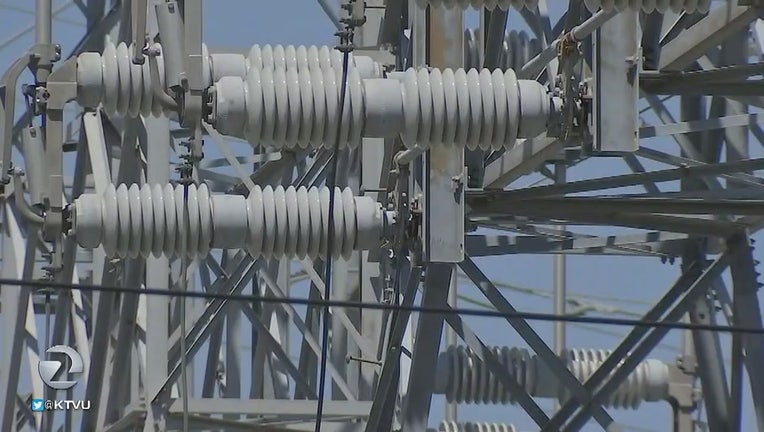Statewide Flex Alert in effect through Wednesday, grid operator calls on all Californians to conserve power

SAN FRANCISCO BAY AREA - The California ISO issued a third consecutive statewide Flex Alert on Sunday, calling for all Californians to voluntary conservate electricity.
The Flex Alert is active from 3 p.m. until 10 p.m. on Sunday, Monday, Tuesday and Wednesday.
Cal ISO says record breaking heat across multiple western US states is straining electricity supplies.
Additionally, severe weather in portions of the state are causing electrical production by solar arrays to decline rapidly, as storm systems cut out sunlight over large areas.
All Californians should plan for potential outages on all four days. Outages are most likely to take place during the evening hours as the temperatures stay above-average.
Cal ISO hasn't said if they'll cut power to residents on Sunday.
For the first time since 2001, a Level 3 emergency was declared, which initiated rolling blackouts that impacted 250,000 customers in the state. On Saturday, a second Level 3 emergency was declared an hour or so after officials with Cal ISO told the public that they didn't anticipate shutoffs.
Saturday's shutoff lasted only 20 minutes, according to Cal ISO.
Friday's shutoff lasted just over 4 hours.
Here are tips on ways to conserve energy:
- Set your thermostat to 78° or higher between 3 and 10 P.M. During peak hours or when you're not home, remember to set your thermostat at 78° or higher. Setting your air conditioner 5° higher can save up to 20 percent on cooling costs. Pre-cool your home by running air conditioning at 72 degrees in the early part of the day (when it is more efficient) then turn your system to 78 or higher during the hottest part of the day when demand is the highest. Use smart or programmable features to help maintain energy savings when you're not home.
- Refrain from major appliance between 3 and 10 p.m. Postpone using major appliances like the oven, dishwasher, clothes washer, and dryer until cooler times of the day to avoid heating up your home. Run your dishwasher and clothes washer only when full. Wait until after 9 p.m. to use these and other major appliances. When possible, wash clothes in cold water. About 90 percent of the energy used in a clothes washer goes to water heating.
- Turn off unnecessary lights and appliances Turn off unnecessary lighting and use task or desktop lamps with LEDs instead of overhead lights Enable "power management" on all computers and turn off when not in use Unplug phone charges, power strips (those without a switch) and other equipment when not in use. Taken together, these small items can use as much power as your refrigerator. Charge medical devices in off hours and have back ups plan for if the power goes out
- Close Windows and Doors On summer nights, open windows to let cooler air in when safe. In the morning before the day starts to heat up, close windows and blinds to keep warm air out Tilt blinds up and close drapes and shades on windows that receive direct sunlight
- Clean or Replace Your Filters. A dirty filter forces your air conditioner and furnace to work harder, wasting money, using more energy or natural gas.
- Turn your water heater down to 120° or the "normal" setting. Water heating accounts for about 13 percent of home energy costs.
- Consider participating in your utility's demand response program. These voluntary programs are short, temporary measures to reduce energy consumption when power supplies are critically low and a Flex Alert has been issued. Contact your local electric utility to learn about your utility's program and incentives they may offer to participate.
You should also check in on neighbors, friends and family who may be at risk during the severe weather.

